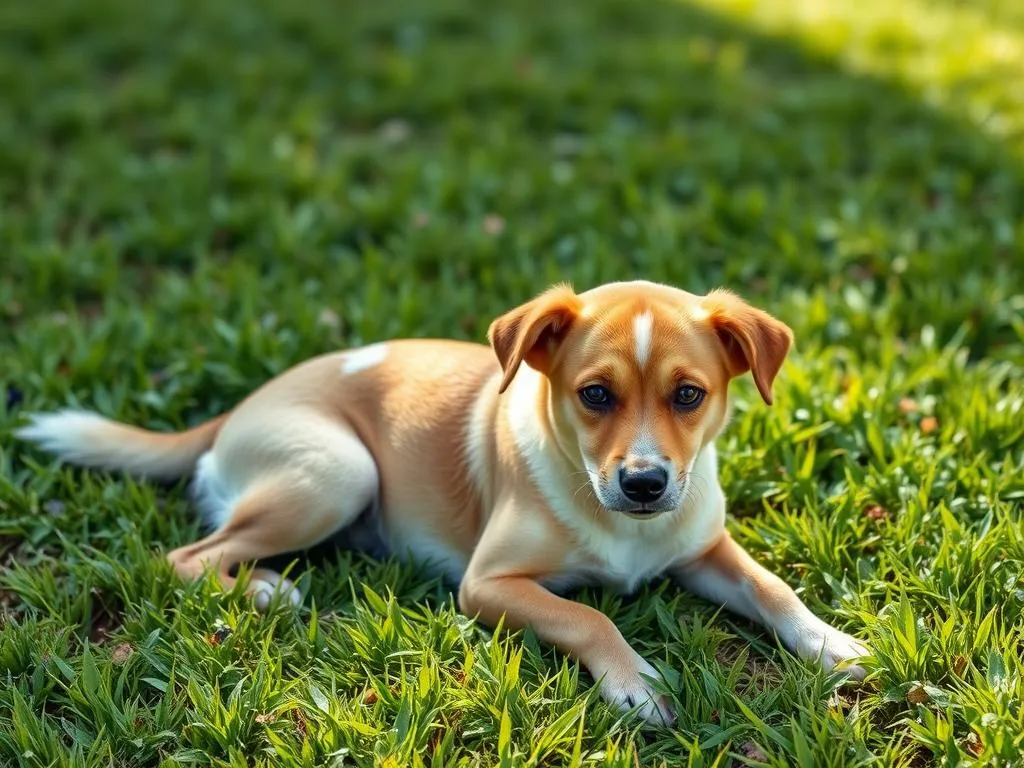
Maintaining a beautiful lawn can be a challenge for dog owners, especially when dealing with the notorious issue of dog urine spots on grass. These unsightly patches are not only an eyesore but can also indicate underlying health issues with your lawn. Fortunately, there are practical solutions and preventive measures you can take to mitigate this problem while keeping your furry friends happy.
Understanding Dog Urine Spots
What Causes Dog Urine Spots?
The primary culprit behind dog urine spots on grass is nitrogen, a key nutrient found in dog urine. While nitrogen is essential for plant growth, excessive amounts can burn grass, leading to discolored patches. Additionally, dog urine contains salts and other compounds that can further affect grass health.
When a dog urinates, the concentrated nitrogen can create a chemical reaction that results in a burnt appearance, often referred to as “lawn burn.” This phenomenon is amplified by factors such as the dog’s diet, which can influence the nitrogen and pH levels in the urine.
Factors Influencing Severity of Damage
The severity of lawn damage from urine spots varies based on several factors:
-
Dog Size and Diet: Larger dogs typically produce more urine, which can lead to more significant damage. Additionally, a high-protein diet can increase nitrogen levels in urine, exacerbating the problem.
-
Grass Type: Some grass species are more resilient to dog urine spots than others. For example, fescue and ryegrass tend to withstand urine better than Kentucky bluegrass.
-
Frequency of Urination: If a dog frequently urinates in the same spot, the cumulative effect can lead to severe lawn damage.
Assessing Lawn Damage
Identifying Urine Spots
Recognizing dog urine spots on grass is the first step in addressing the issue. Look for patches that appear yellow or brown, often surrounded by lush green grass. The texture of the affected grass may also be different—often dry and brittle compared to neighboring areas.
It’s essential to distinguish between urine damage and other types of lawn damage, such as those caused by pests, disease, or drought. Urine spots typically have a more uniform appearance and are often limited to specific areas where the dog frequently urinates.
Evaluating the Extent of Damage
To determine how best to treat the damage, assess whether the grass can recover. Signs of recovery include new growth emerging from the base of the blades. Conversely, if you notice bare patches or an absence of green shoots, the damage may be irreversible and require reseeding.
Treatment Options for Dog Urine Spots
Immediate Remedies
When you first notice dog urine spots on grass, it’s crucial to act quickly. Here are some immediate remedies:
-
Watering the Affected Area: Immediately watering the spot can help dilute the urine, minimizing its harmful effects. Aim to soak the area thoroughly to wash away as much nitrogen and salt as possible.
-
Diluting the Urine: If you’re able to catch your dog in the act, redirect them to a designated potty area to prevent concentration of urine in one spot.
-
Applying Pet-Safe Products: Look for commercial products specifically designed to neutralize urine spots. These often contain beneficial bacteria or enzymes that break down nitrogen and other compounds in urine.
Long-term Solutions
For lasting results, consider the following long-term solutions:
-
Reseeding or Patching Damaged Areas: If the damage is extensive, reseeding may be necessary. Choose a grass type that is known for its resilience to urine damage.
-
Fertilizing and Lawn Care: Regularly fertilizing your lawn can help promote recovery and growth. Use a balanced fertilizer to replenish nutrients that may have been depleted.
-
Recommended Grass Types: Some grass types, such as tall fescue and Bermuda grass, are more tolerant of urine damage. If you’re considering re-sodding, these options may be worth exploring.
Natural Remedies
If you prefer a more natural approach, consider trying these homemade solutions:
-
Vinegar: A mixture of white vinegar and water can help neutralize the effects of urine. Spray this solution on the affected areas to help restore balance to the soil.
-
Baking Soda: Sprinkling baking soda on urine spots can absorb odors and help neutralize the pH in the soil.
-
Beneficial Bacteria or Enzymes: Look for products containing beneficial bacteria that can break down the nitrogen in urine. These can be particularly effective in restoring damaged areas.
Preventive Measures
Training Your Dog
Training your dog to use a designated area for urination can significantly reduce the occurrence of dog urine spots on grass. Here are some effective strategies:
-
Teaching Commands: Use commands to guide your dog to specific areas where they can relieve themselves. Consistency is key, so ensure everyone in the household follows the same routine.
-
Positive Reinforcement: Reward your dog with treats or praise when they use the designated area. This will encourage them to return to that spot in the future.
Lawn Management Strategies
Creating a dog-friendly yard can also help minimize damage. Consider the following strategies:
-
Designing a Dog-Friendly Yard: Incorporate hardscaped areas or gravel that are more resistant to urine damage. These areas can provide your dog with a place to play without harming your lawn.
-
Establishing Designated Potty Areas: Create a specific area with dog-friendly ground cover where your dog can urinate without damaging your grass. Consider using synthetic grass or mulch that is easy to clean and maintain.
Diet Adjustments
The composition of your dog’s urine can be influenced by their diet. Here’s how you might address this:
- Dietary Changes: Discuss potential dietary adjustments with your veterinarian. A diet lower in protein might result in less nitrogen-rich urine, reducing the likelihood of lawn damage.
Additional Tips and Tricks
Maintaining a Healthy Lawn
Keeping your lawn healthy is essential for mitigating the effects of dog urine spots. Here are some best practices:
-
Regular Lawn Care: Implement a consistent lawn care routine that includes mowing, watering, and fertilizing. Healthy grass is better equipped to recover from damage.
-
Seasonal Considerations: Be mindful of seasonal changes that can affect lawn health. For example, during hot and dry months, ensure your lawn receives adequate water.
Using Lawn Care Products
Numerous commercial products are available to help treat dog urine spots on grass. Here’s a brief overview:
-
Pet-Safe Solutions: Look for organic or pet-safe options that can neutralize urine without harming your pets or the environment.
-
Pros and Cons: While commercial products can be effective, they may vary in terms of cost and efficacy. Always read labels and reviews to choose the best product for your needs.
Professional Help
If the damage is extensive or you’re unsure how to proceed, it may be time to consider hiring a lawn care professional. Here are some tips:
-
When to Hire Professionals: If your lawn is suffering from persistent issues or if you need help with reseeding, a professional can provide valuable insight and solutions.
-
What to Look For: Choose a lawn care service experienced in dealing with pet-related issues. Ask for recommendations and look for companies that use environmentally friendly practices.
Conclusion
Dealing with dog urine spots on grass is a common challenge for dog owners, but it’s manageable with the right knowledge and tools. By understanding the cause of these spots, assessing lawn damage, and implementing effective treatment and preventive measures, you can maintain a healthy and vibrant lawn while ensuring your dog has a safe space to play.
Taking proactive steps will not only help preserve your lawn but also create a harmonious environment for both pets and plants. Whether you choose immediate remedies, long-term solutions, or preventive strategies, the key is to remain vigilant and responsive to your lawn’s needs. Happy gardening!
FAQs
Can I prevent dog urine spots entirely?
While it may not be possible to eliminate them completely, proper training and lawn management can significantly reduce their occurrence.
How long does it take for grass to recover from urine spots?
Recovery time varies based on grass type and extent of damage but can take anywhere from a few weeks to several months.
Are there specific grass types that are more resistant to urine damage?
Yes, grasses like tall fescue and Bermuda grass tend to be more resilient to the effects of dog urine.
What are the best pet-safe products for lawn treatment?
Look for products containing beneficial bacteria or enzymes specifically formulated to neutralize pet urine without harming your lawn or pets.









